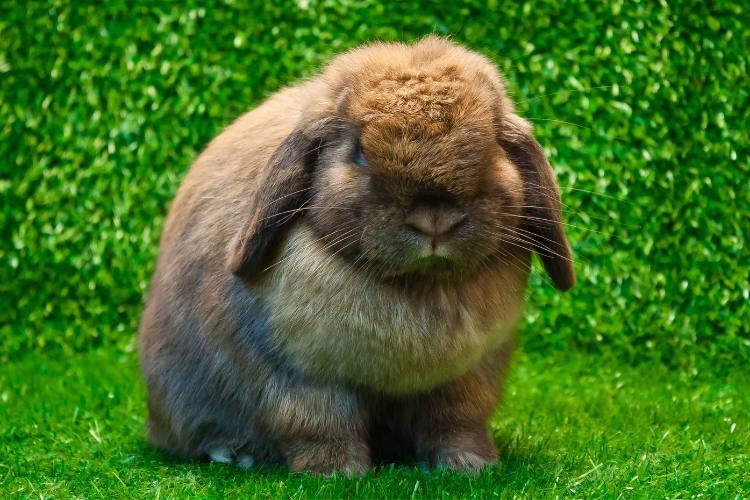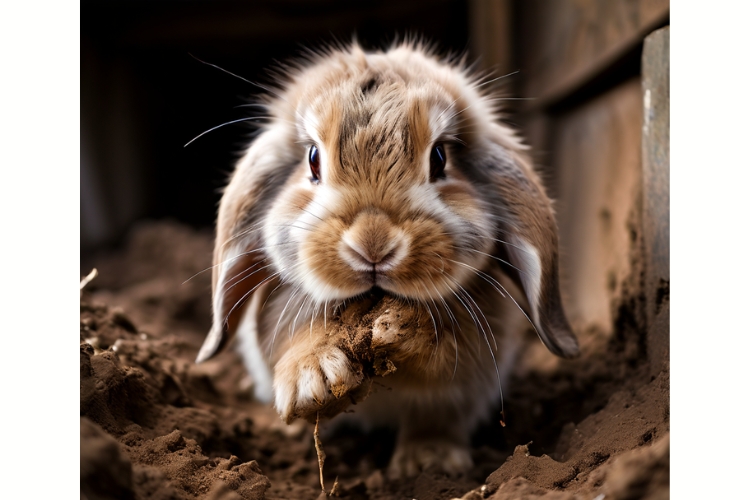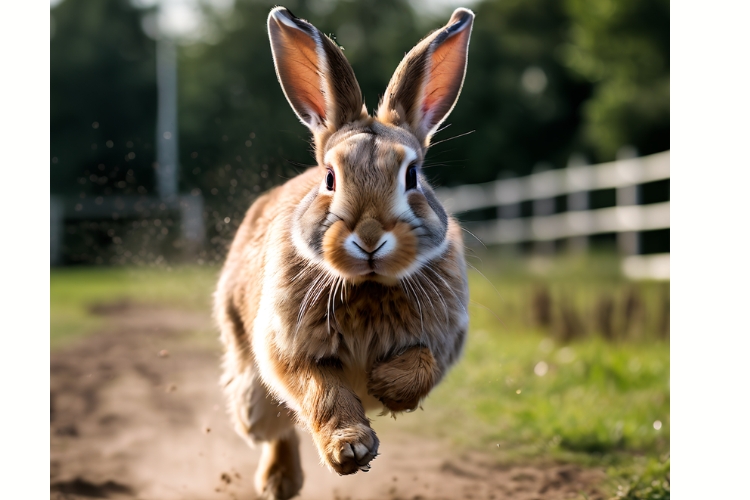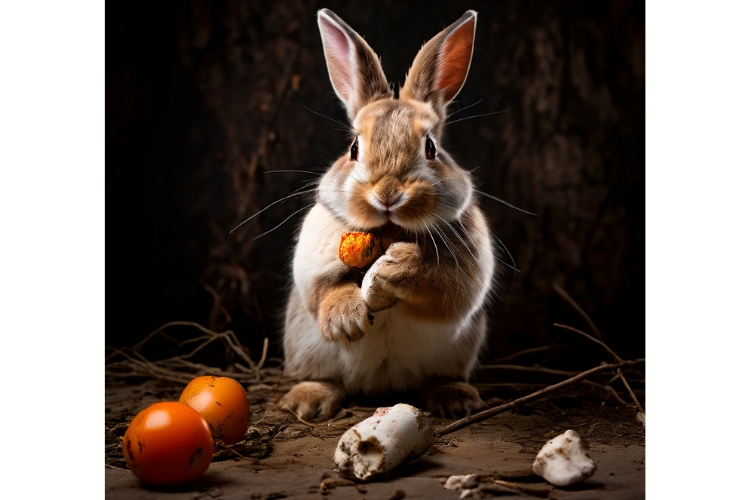The Holland Lop is one of the most popular breeds of domestic rabbit, renowned for its cute “lop” ears that hang down on both sides of the head. Their compact size and affectionate nature also make them a favorite pet rabbit choice for many owners.
However, even though Holland Lops have a generally docile temperament, they can still demonstrate certain behavioral issues from time to time.
By understanding some of their common problematic behaviors and implementing the right solutions, Holland Lop owners can help address these issues and enjoy a fulfilling relationship with their bunny.
Digging & Chewing Destructively
A common complaint among Holland Lop owners is the tendency for these rabbits to dig and chew on inappropriate items. In the wild, rabbits dig to create burrows and tunnels to provide security and shelter.
The chewing behavior is also natural as they gnaw on roots, twigs and grass for nutrition. However, our domestic Holland Lops often redirect these innate behaviors towards destructive digging and chewing around the house.
They may dig at carpets and rugs, chew on furniture, books or wall corners. This can be frustrating for owners and also poses health risks for the rabbits if they ingest carpet fibers, wood splinters or toxic materials while chewing.
Solutions:
- Rabbit-proof your house by removing access to electrical wires, poisonous houseplants and valuables. Holland Lops can still be given supervised time around the house but risky areas should be temporarily blocked off.
- Provide acceptable outlets for digging and chewing. Fill a box with shredded paper, place grass mats or untreated wicker baskets around their pen for these investigatory behaviors. Rotate toys to keep them novel and appealing.
- Consider crate-training your Holland Lop when unsupervised. Crates should be large enough for litter boxes, hay, hideaways and water while preventing destructive behaviors.
- Increase exercise time. Letting your Holland Lop run around a bunny-proofed room or hallway promotes healthy activity levels.
Spraying Urine & Fecal Matter
Some Holland Lops demonstrate urine spraying or fecal scattering behaviors around their living space. Spraying urine can be a form of territorial marking while fecal scattering leaves little poop pellets outside the litter box.
This unsanitary habit makes cleaning up much harder for the owner. Sometimes medical issues like urinary tract infections cause inappropriate urination but often spraying and scattering are natural rabbit behaviors that become problematic indoors.
Solutions:
- Get your rabbit desexed. Spaying/neutering helps decrease territorial behaviors like urine spraying in both male and female rabbits.
- Place multiple litter boxes around their space. Rabbits like to use separate corners for urination and defecation. With ample boxes available, spraying or scattering incidents are reduced.
- Clean up accidents swiftly with vinegar to erase scent cues. This prevents repeat occurrences in the same spots. Consider using puppy training pads around the boxes too.
- Check that litter boxes are large enough, cleaned frequently and filled with preferred litter. Addressing these factors caters to rabbit preferences for hygienic bathroom habits.
Aggressive Lunging & Nipping
Holland Lops are typically docile but some demonstrate aggression in the form of lunging, nipping or biting their owners. This often stems from fear-based reactions to something threatening, like loud noises or quick movements. Pain-induced aggression can also occur if arthritis leads to discomfort being handled.
Dominance behaviors where the rabbit challenges the owner’s authority may happen during adolescence too. Regardless of the cause, aggressive displays should be addressed swiftly to prevent escalation or injury.
Solutions:
– Approach the rabbit slowly and avoid looming over them which may seem intimidating. Let them come to you first for treats and gentle pets.
- Neuter/spay adolescent or territorial rabbits exhibiting classic dominance behaviors like circling feet, grunting and nipping ankles. This curbs aggression hormones.
- Address suspected pain issues by scheduling a vet check-up for arthritis, dental disease etc. Pain relief and treatment will minimize grumpy behavior.
- Protect yourself if aggression occurs. Wear thick gloves and stop all interaction to reinforce that biting equals no attention. Yelping also mimics sounds of injured rabbits.
Destructive Bond-Breaking Behaviors
While bonding with an introductory spayed/neutered mate is ideal company for Holland Lops, the initial pairing process can be turbulent. Some bonding rabbits display vicious bite-attacks, drawn-out squabbles and extreme fur-pulling towards their intended partner.
This destructive behavior may continue for days or weeks as they determine dominance hierarchy and relationships. Owners might be tempted to permanently separate them but should generally persevere with monitored bonding sessions. Only 1-5% of introductory rabbit pairs fail to eventually bond if proper techniques are followed.
Solutions for Difficult Bonds:
- Have bonding sessions in neutral spaces like bathrooms or playpens, avoiding established territories. Use water spray bottles to gently interrupt vicious fights only.
- Try the “smooshing” technique where rabbits are loosely wrapped together in a towel, forcing social interaction devoid of conflict or injury. Exchange scents also with swapped litter boxes.
- Allow short, supervised meetups ranging from 15 minutes to a few hours depending on reactions. Separate if negative behavior escalates like increasing fights, vicious bites that draw blood or signs of extreme stress in either rabbit.
- Persist daily with bonding sessions until aggression dissipates. This indicates a resolution in their hierarchy and friendship has been established. Total timeframe can range from days to months.
Inappropriate Mounting & Circling
Some Holland Lops display inappropriate mounting of objects, owners or other pets in the household. They may clasp their front paws tightly around ankles, furniture legs or even cat/dog housemates while vigorously thrusting their pelvis.
This mimicry of sexual mounting is not actually driven by the urge to mate but tied to dominance displays. The circling and lunging motions related to it are part of natural rabbit courtship but problematic in altered domestic Holland Lops. It usually develops from adolescence at 4-6 months old and can be curbed by neutering/spaying.
Sometimes elderly unneutered bucks still demonstrate persistent mounting despite hormonal decline with maturity and must be managed to prevent injuries to people or pets.
Solutions:
- Schedule a neuter/spay for the rabbit. This eliminates much of the hormonal motivation behind mounting and circling actions, especially in young Holland Lops. Resolution can be seen as quickly as 2 weeks post-surgery.
- Block access to problematic targets like table legs using protective barriers or bitter-agent sprays until the habit is broken. Provide outlets like dig boxes or chew toys instead.
- Ignore the behavior rather than reacting angrily as this can reinforce attention-seeking mounting. Gently remove and divert the Holland Lop’s focus to another activity anytime circling initiates.
Final Words!
With a thorough understanding of common Holland Lop problem behaviors and the implementation of the right solutions, owners can curb destructive habits, build rewarding bonds, and enjoy all the perks of rabbit companionship.
While initially frustrating, insight into the motivational basis of actions allows customized modifications using patience and persistence. Ultimately, promoting healthy outlets that consider natural rabbit etiology leads to harmonious human-Holland Lop relationships for years to come.





